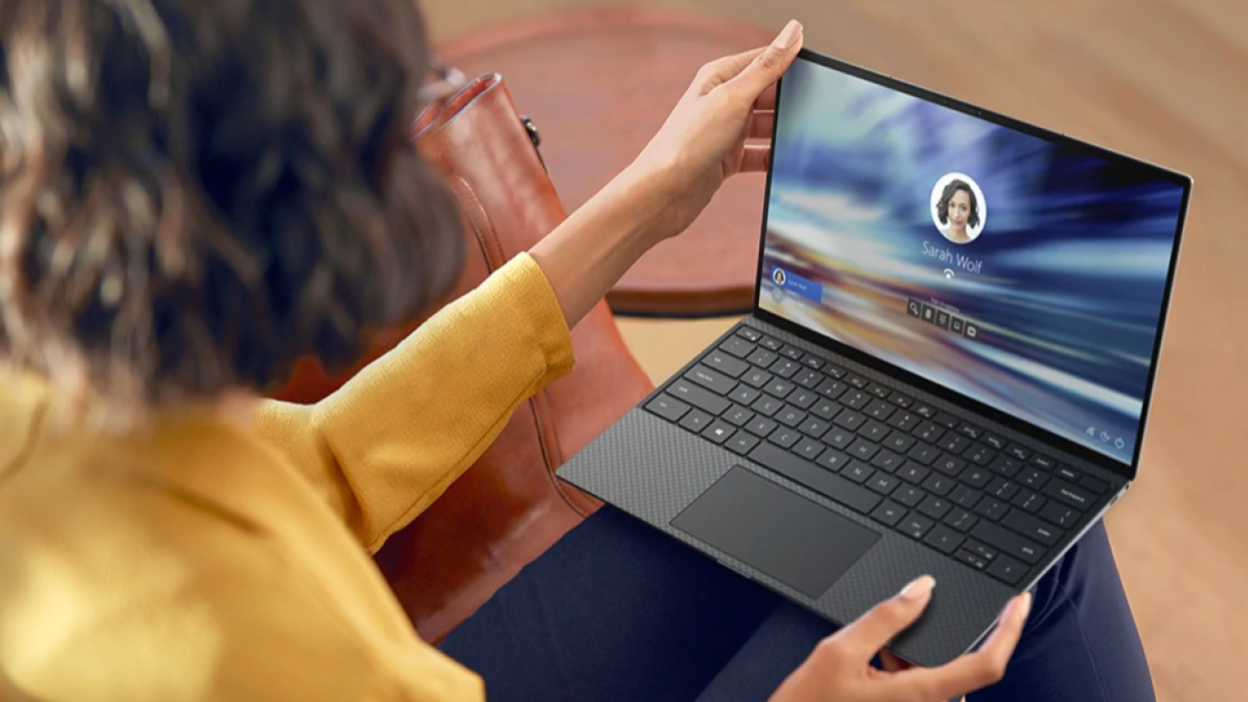
Whether you’re a student, gamer, businessperson, or creative professional, a laptop is basically one of the most essential items in your daily life. Even if your line of work has nothing to do with using a computer, a laptop still comes in incredibly handy at home.
With the powerful and portable technology becoming so commonplace, however, you can bet that there’s an abundance — dare we say, overabundance? — of laptop options on the market today. And with that dizzying amount of choices, no one could blame you for getting overwhelmed by all the numbers and models and specs. So when you absolutely need to decide on a new laptop, how can you possibly decide which one is best?
Don’t worry, we’ve got your back. If you’re considering a Dell laptop, specifically, they have a lot of options to fit any need, and we’ve rounded up some of the best of their offerings right here. From student-friendly Chromebooks all the way up to fully-specced mobile workstations, we’ve chosen a wide range of the best Dell laptops for all people and all budgets.
To find the right one for you, however, you’ll need to know some basic points when it comes to technical specifications. Because this will help you determine which laptop fits your wants and needs, we’re about to break down the technical talk into some more digestible tidbits. So, before we jump into the best Dell laptops, we should take a quick, but in-depth look at all those little components that’ll make up the perfect laptop to carry you through your days.
What’s the difference between different Dell laptop models?
As one of the top computer brands of the past few decades, it should come as no surprise that Dell offers several different laptop models to cater to different budgets and needs. However, deciphering between their intended use, their size, and their relative price is not necessarily easy, and most, if not all, are followed by a series or seemingly useless numbers.
Fortunately, you have us to walk you through a few key tips that’ll help you spot the exact laptop you want as soon as you see its name:
Inspiron — This line is likely to be your go-to for standard use at home or at school. They run the gamut from budget laptops for just the basics to uber-powerful machines with top specs, from ultra-compact portable machines to maxed-out displays. No matter your preferred screen size or price range, there’s a wealth of Dell Inspiron laptops from which you can choose.
XPS — For those who need a laptop with a little more power and finely-tuned performance, the XPS is a great choice. A nice fit for home or business use, this line of Dell laptops offers premium design coupled with the potential to pretty much max out the technical specs for a laptop that serves both epic form and function.
Alienware and G Series — These are Dell’s options for gaming laptops, with the Alienware line offering a premium experience for hardcore gamers, and the G Series catering more to casual gamers or those on a tighter budget. If you still want more options, though, browse the top picks for the best gaming laptops from any brand.
Latitude — When you’re ready to get down to business, this reliable series has got you covered. Whether you’re in the office, working from home, or traveling for business, these slim and sleek, yet powerful and durable laptops will let you accomplish your tasks anywhere and everywhere you go.
Precision — If the Dell Latitude just won’t cut it, more demanding professionals will want to opt for the Precision line. These laptops are actually more akin to mobile workstations due to their maximum tech spec options, as well as Independent Software Vendor (ISV) certifications that help ensure powerful applications — such as those in the computing, engineering, and architecture fields — will run nice and smooth. You’re likely to find the epic Intel Xeon CPU and Nvidia Quadro GPU in this lineup of Dell laptops
Chromebook — If you’re on a tight budget, shopping for a kid’s first laptop, or really just need something for web-browsing, emails, and other light, web-based tasks, then a Chromebook should fit your minimised needs perfectly. Dell offers one style of Chromebook, but you can ramp the technical specs up or down as needed.
When it comes to the numbering of Dell’s laptops, you’ll notice that most models are broken down into three levels: 3000, 5000, and 7000 (or G3, G5, and G7 for the G Series gaming laptops). These series numbers mostly determine how “premium” the laptop is, with the lowest level offering lower specs and, of course, a lower price. You’ll also notice that Dell’s laptops are notated with either a 13, 15, or 17. This is the easiest number to decipher in their model names as it is simply the laptop’s display size: 13 inches, 15 inches, or 17 inches.
When you put it all together, it becomes a lot easier to decode Dell’s wide range of laptops. With just a quick glance, you’ll know that the XPS 13 5000, for example, is a mid-range XPS model with a 13-inch screen. Simple, right?
Does Dell make convertible laptops?
If you’re looking for a 2-in-1 laptop, nearly all of Dell’s most popular models come with the option of being configured as either a standard clamshell or a convertible laptop, except the Alienware and G Series gaming laptops. There are no tricky numbers or naming there; Dell will spell it out for you plain and simple if it’s an option.
What are the most important things to look for in a laptop?
Admittedly, there are a lot of different technical specs to consider when choosing your laptop. But if you just want to focus on the most important components on your search for the best Dell laptop, it all depends on how you plan to use it. For heavy-duty gaming or running powerful programs, you’ll want a serious CPU and GPU to keep things running smoothly, plus a hefty amount of RAM (think 16GB or more) to prevent skipping and lagging. On the flipside, your focus may be more on the size, weight, and overall portability of your laptop if you intend to carry it back and forth from work or school on a daily basis. If you’ll just be using it for light tasks, you don’t need to be as concerned about specs like GPU or RAM.
Another point of significance for many is the number of available ports on their laptop. Many accessories connect via Bluetooth these days, but some items still need a port to plug into, whether that’s a thumb drive, a mouse, a microphone, or something else. So if you know that is the case for you, keep an eye on how many USB ports your laptop of choice provides. You may also want to consider other slots, like an SD card reader, especially if you dabble in creative fields such as photography and videography.
What components need to be considered when choosing a laptop?
Once you’ve figured out which type of Dell laptop is best for your budget and needs, you’ll also want to consider all of the good stuff that goes inside to allow the laptop to run like a dream. Many laptops offer the option to top-up the specs, but if you don’t actually need all that power for your particular usage, that’s a whole lot of money flushed down the drain.
To decide what’s best for you and your wallet, let’s take a look at the often customisable components that make up the innards of a laptop:
CPU — Think of the central processing unit as the brains of your computer. It’s in constant communication with all the working parts of the laptop, essentially running the show no matter what type of task you’re completing. If you’re doing more than just basic web browsing, email reading, and word processing, you won’t want to skimp too much here as the CPU has a strong hand in how fast your laptop can run. Heavy-duty applications, like games and video-editing software, will require a more powerful processor to ensure that everything runs quickly and smoothly, but lower-usage laptops can get by with something like an Intel Core i5 processor.
GPU — Better known as simply the “graphics card,” the graphics processing unit basically determines how good things look on your laptop. The beauty behind the brains, it allows demanding video games the ability to render high-quality graphics and skip-free gameplay even at the highest settings. Those working in visually creative fields will also want to opt for a more impressive GPU, such as those offered by Nvidia. However, if you’re just performing basic tasks on your laptop and don’t even care too much about streaming content, Intel’s standard graphics cards will serve you just fine.
RAM — Also known as system memory, this component’s full title is actually “random-access memory.” It’s another one of the pieces of your laptop’s puzzle that determine how fast and efficient your applications run. It’s basically the short-term storage for everything you have open at any given time, so you’ll want something 8GB or higher if you plan to do a lot of multitasking. When it comes to video games and other demanding software, you’ll probably want to opt for RAM of 16GB or more.
Storage — Before you commit to getting a laptop with the most onboard storage possible, consider the availability of cloud storage options. If you’re not saving massive photo and video files or installing large programs, opting for a lower tier of storage might save you a few coins in the long run. And yes, this component concerns the amount of storage available for saving files on your laptop. But it also has a lot to do with how those files are saved. You may have the choice of either a hard drive (HDD) or a solid-state drive (SSD storage), so here’s the main difference between the two: HDDs often provide a larger storage capacity, but they tend to have a poorer performance when it comes to quick retrieval of your files. It is possible to get the best of both performance and storage in a laptop that utilises a dual-storage approach, but you’ll likely see this more in high-end models.
Display — You could opt for an epic GPU, but it won’t mean much if your display isn’t up to par. For any usage, you’ll want to go for a screen with at least 1080p resolution to avoid grainy images and text, while gamers and creatives will want a display that’s Full HD or better to ensure the best experience. Display size is also something to consider, especially if you intend to travel often with your laptop. You’ll find that most gaming laptops are 15 inches or larger, but most standard users will be more than happy with a 13-inch display or even smaller. Last but not least, consider whether or not a touchscreen laptop surface is something that you think you’ll utilise. It’s a cool feature to have, though many users might find that they never use it unless they’re in a creative field or they’re a student who prefers note-taking with a more manual feel.
There is no need to have an encyclopedic knowledge of this information, but it’s good to have an understanding of what’s going on before making a purchase.
Are Dell laptops good for gaming?
As we touched on above, Dell has not one, but two lines of gaming laptops that cater to different types of gamers (or, at least, gamers with different budgets). Their Alienware lineup actually features some of the best premium gaming laptops on the market, and they’re far better than any HP laptop designed for gaming, just as an example. But you’d be forgiven for not even realising that these absolutely powerful beasts are part of the Dell family. Unlike Dell’s other models, the brand name isn’t plastered in front of the Alienware name, possibly to give it some sort of distinction beyond the more business-focused laptops and computers for which Dell is most known. Overall, the Alienware laptop boasts a premium design with sturdy construction up and down the line, plus heavy-duty specs like Nvidia GeForce graphics cards and plenty of RAM to handle the most serious gaming. However, that also means they can be a bit big and bulky, if that’s a concern for you. They’re also likely to cost you a pretty penny with the most entry-level offerings hovering above the £1,000 threshold.
Dell’s G Series, on the other hand, offers a line of gaming laptops that are less likely to break the bank. They’re targeted towards mainstream gamers with more modest technical specs and lighter builds. This isn’t to say they can’t handle hardcore gaming, but you might need to turn down the game’s settings just a bit to garner the most optimal gaming experience. Even so, if you’re working with a tight budget, the G Series makes it more than possible to enjoy laptop gaming while still leaving some money in your pockets to actually afford the video games that you want to play on them.
What is the best laptop from Dell?
We’ve covered a lot of information, so we should probably dive into the top picks for Dell laptops that fit all needs, from demanding business professionals to hardcore gamers to students who just need a simple Chromebook to get their homework done.
These are the best Dell laptops in 2021.







